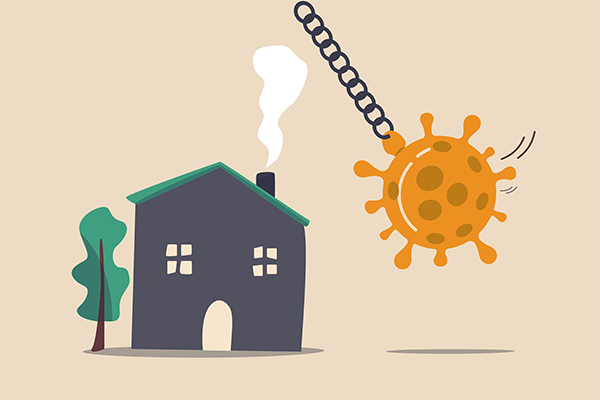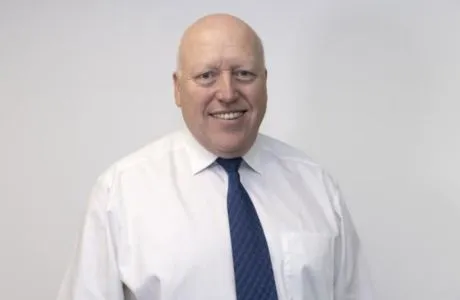
Some 2.75 million mortgage payment deferrals have been granted since March last year, but what will happen when the scheme ends this summer?
UK Finance figures show that a startling 1.8 million borrowers had a mortgage payment deferral in place at the end of June 2020, equating to one in six borrowers.
Since then this figure has reduced considerably, with 130,000 deferrals — one in every 84 mortgages — in place at the end of December.
But will borrowers simply resume payments where they left off, or should the industry brace itself for a wave of arrears and repossessions?
Drop in deferrals
“The deferral figures from UK Finance tell their own story,” says London & Country Mortgages associate director of communications David Hollingworth.
“That initial first wave of deferrals was the result of people taking the so-called holiday as a precautionary measure. Many borrowers were anxious about what the pandemic would mean for their income and, as such, rushed to take advantage of the scheme.
“Once borrowers saw they weren’t going to need a deferral, they restarted payments. I expect those borrowers who are still deferring them are those who genuinely need to be,” he says.
UK Finance estimates that, overall, eight in 10 borrowers who requested a deferral have now returned to making full repayments.
Just Mortgages and Spicerhaart national operations director John Phillips is hopeful there will be more.
“Once Covid is under control and we get back to some sort of normality, many of those deferring their payments will be able to recommence their job or obtain another one and therefore be in a position to catch up with mortgage payments,” he says.
With unemployment at a four-year high, however, it seems inevitable there will be borrowers who may still struggle.
Stonebridge chief executive Rob Clifford is optimistic that lenders will be understanding.
“Since the credit crunch a decade ago, lenders’ forbearance policies have been improved greatly and I would hope to see a large degree of flexibility as lenders seek to support borrowers who are not to blame for the financial impact of the pandemic,” he says.
What are the options for those coming to the end of their payment holiday but not yet in a position to start making full repayments?
UK Finance suggests a number of options, such as making a part-payment or extending the length of the mortgage term. Alternatively, a borrower could temporarily switch to interest-only, defer payment of the interest due, or add the extra interest owed to the balance of the loan —known as capitalising.
The tricky part for lenders will be walking the line between providing adequate forbearance for borrowers while not escalating their financial woes further.
“Lenders will need to find a balance between giving the borrower enough time to financially recover but also not potentially worsen their position by ramping up their debt further and prolonging their forbearance unnecessarily,” Hollingworth says.
He does not think there will be any knee-jerk reactions from lenders because, until the furlough scheme ends this April, it will be hard for them to accurately assess who is and who is not in a position to resume their payments.
Rising arrears and repossessions
Lenders may not be in a rush to repossess but UK Finance is still predicting an almost doubling of arrears in 2021, with a sevenfold increase in repossessions by 2022.
It expects arrears to rise from the 81,300 we saw in 2020 to 142,200 in 2021, with a slight fall in 2022 to 120,900.
Although the 2021 and 2022 forecasts are a marked increase on the past five years’ arrears average, it is worth noting that the 2021 forecast is still lower than the annual number of arrears the market witnessed from 2009-13, with the figure peaking at 199,600 in 2009.
Aside from exceptional circumstances, lenders have been banned from repossessing properties since March 2020 and, as such, only 2,900 repossessions were carried out last year.
That ban will come to an end on 1 April 2021 and UK Finance is forecasting a rise in repossessions to 13,100 in 2021 and 23,300 in 2022.
Just as with arrears, however, these figures are still much lower than the number of yearly repossessions from 2009-13, with the figure peaking at 48,900 in 2009.
Nevertheless, 23,300 repossessions is a significant figure.
“Once the ban on repossessions is lifted, it will open the floodgates for borrowers who were in the process of being repossessed before Covid, and those who have struggled since,” says Phillips.
Although he believes most lenders will try their best to help borrowers stay in their homes, Phillips adds: “If this is not possible, it is often in the best interest of the borrower to hand over the keys, otherwise they will end up owing much more and could be stuck with that debt in the future.”
A spokesperson for StepChange Debt Charity is hopeful that lenders and the Financial Conduct Authority will do everything possible to keep people in their homes.
“People who’ve been affected by the pandemic will need time to get back on their feet; and extended support to help them do that must surely be preferable to crystallising their problems by taking possession if they have a realistic prospect of long-term recovery,” the spokesperson says.
“We know that, when realistic solutions are available, people are often able to maintain their homeownership over the long term even if they have experienced debt shocks.
“If there was ever a time to take a long-term view of people’s prospects, rather than focusing on an unrealistically short-term period for recovery, then it is now.”
The charity would like to see a long-term government strategy to help people safely out of their Covid debt.
Many of its clients are renting in the private sector and StepChange, along with the National Residential Landlords Association, is calling on the government to develop a package of hardship loans and grants to help renters who have built up arrears as a result of lockdown. The current ban on private tenant evictions comes to an end soon, on 21 February 2021.
“The key challenge in the sector remains renters who have built arrears as a result of the lockdown measures,” says an NRLA spokesperson.
“While many landlords have done everything they can to support tenants affected, their ability to continue this has for most come to an end.”
NRLA data shows very few landlords have sought a mortgage deferral. However, a healthy buy-to-let market is also reliant on tenants who are able to pay their rent, so this could be an area of growing concern.
Treading carefully
There are going to be some difficult decisions for lenders in the coming months, and tough times ahead for some of the 130,000 mortgage holders currently deferring payments.
The position for many borrowers is still precarious and a lot of what transpires in the mortgage market will depend on the wider economy, the Covid vaccine, and borrowers being able to resume employment.
There does, however, seem to be a quietly optimistic view in the market that, although a rise in arrears and repossessions is almost inevitable thanks to the pandemic, it will not be as devastating as some people envisage — provided the appropriate policies are in place.


